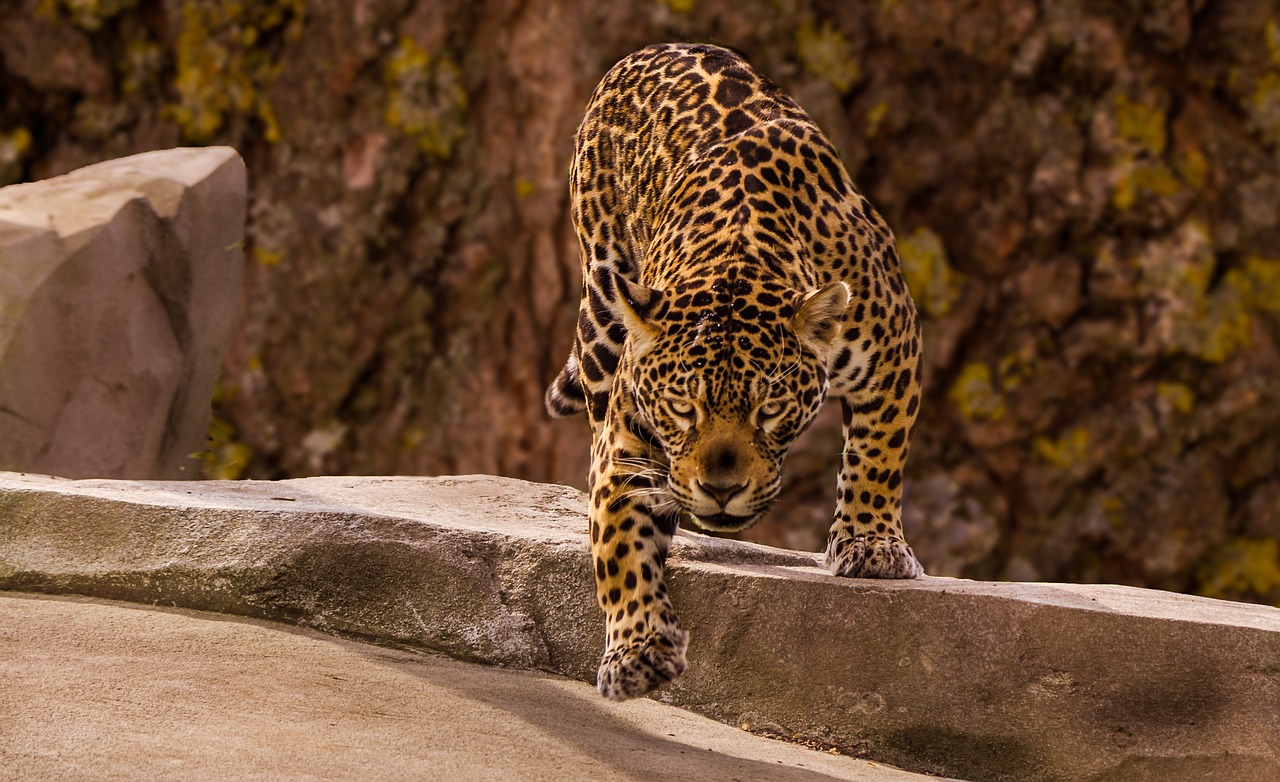The Coastal Environment: Where Jaguars Thrive in Tulum
The Ecosystem of Tulum
Tulum, located along Mexico’s Caribbean coastline, is renowned for its stunning beaches and crystal-clear waters. However, beneath this picturesque facade lies a complex coastal environment teeming with biodiversity, particularly the elusive jaguar. This majestic feline thrives amidst a unique ecosystem that consists of a mix of tropical forests, coastal marshes, mangroves, cenotes, and coral reefs. Understanding the intricate interplay of these elements is crucial for appreciating why jaguars find Tulum both a home and a hunting ground.
Mangrove Forests: The Jaguars’ Shelter
Mangroves are coastal trees that thrive in saline environments, providing essential habitats for wildlife. The Tulum area features extensive mangrove forests that act as crucial shelters for jaguars. These trees offer protection from harsh weather conditions, serve as a refuge from human activities, and create an ideal breeding ground for numerous species. Jaguars often stalk their prey near the water, utilizing the thick roots of mangroves as both cover and vantage points.
Mangrove habitats are also rich in biodiversity, with various birds, reptiles, and mammals cohabiting alongside jaguars. Species such as the green iguana and various bird species contribute to the ecological balance within these forests, nurturing a food chain that begins with the smallest organisms and culminates with apex predators like the jaguar.
Tropical Forests: A Diverse Haven
The tropical forests surrounding Tulum are another critical component of the jaguar’s habitat. These rainforests are characterized by dense foliage, towering trees, and a multitude of plant species, including hardwoods like mahogany and ceiba. The dense vegetation provides not only cover for the jaguar but also an abundance of prey.
Within these forests, jaguars primarily hunt larger mammals, including deer, peccaries, and tapirs. Their remarkable hunting ability allows them to ambush prey with stealth and power. The foliage acts as a perfect camouflage, allowing jaguars to remain hidden as they stalk through the underbrush.
The Role of Cenotes
Cenotes, natural sinkholes filled with freshwater, are prevalent in the Tulum region. These geological formations showcase the intricate relationship between the jaguar and its environment. For jaguars, cenotes serve as critical water sources, particularly during the dry season when other water sources might dwindle.
Cenotes are also biodiversity hotspots, hosting various fish species and surrounding flora that attract other wildlife, including birds, mammals, and reptiles. The abundance of life around cenotes creates a thriving ecosystem that supports the jaguar’s robust presence in Tulum.
Coral Reefs: Support for the Coastal Ecosystem
Tulum’s coastal waters, decorated with vibrant coral reefs, also support the jaguar indirectly. These reefs serve as vital ecosystems that promote the health of the coastal environment. They offer fishing grounds for various marine life that contributes to the ecological balance. While jaguars are terrestrial predators, a healthy marine ecosystem improves the overall biodiversity of the region, which can have cascading effects on species populations, including prey for jaguars.
Coral reefs help stabilize the coastline, prevent erosion, and protect mangroves from severe weather conditions, which inadvertently benefits jaguar habitats. By fostering a healthy environment, coral reefs help safeguard the delicate balance necessary for sustaining jaguars in Tulum.
Conservation Efforts in Tulum
Despite being apex predators, jaguars face numerous threats, including habitat loss, poaching, and human-wildlife conflict. Tulum’s development for tourism and agriculture creates a pressing need for sustainable practices and conservation efforts. Organizations focused on wildlife conservation are crucial for ensuring that Tulum’s flora and fauna remain intact.
One significant initiative is the establishment of the Sian Ka’an Biosphere Reserve, a UNESCO World Heritage Site that protects a diverse range of ecosystems. This reserve plays a pivotal role in safeguarding jaguar populations by preserving their natural habitat and ensuring their prey remains abundant. Community involvement in conservation strategies is essential, as local communities can act as stewards of the environment and help mitigate human impact.
The Importance of Ecotourism
Ecotourism has become a popular approach to promote environmental awareness while benefiting local economies in Tulum. As more visitors come to appreciate the beauty and significance of Tulum’s coastal environment, they contribute to conservation funding and create a global dialogue about sustainability.
Responsible tourism practices encourage visitors to respect wildlife and their habitats, reducing the potential for conflict between humans and jaguars. Guided tours that highlight the importance of jaguars and educate participants on ecological preservation can foster a deeper connection to the region’s wildlife.
Challenges Faced by Jaguars in Tulum
Despite these efforts, jaguars in Tulum still face numerous challenges. Climate change threatens to disrupt delicate ecosystems, leading to reduced prey availability and altered habitats. Increased pollution in coastal waters can adversely impact both marine life and freshwater sources in the region, further complicating the survival for jaguars.
Additionally, illegal poaching remains a pressing concern. As demand for jaguar parts continues, poachers exploit their vulnerable populations. Consistent monitoring and strict enforcement of wildlife protection laws are critical to combat these threats effectively.
The Future of Jaguars in Tulum
For jaguars to continue thriving in Tulum, ongoing collaboration between government agencies, conservation organizations, and local communities is vital. The preservation of their habitats, combined with public education on the importance of maintaining ecological balance, will play a significant role in ensuring a sustainable future for these magnificent creatures.
Public support for conservation initiatives must grow to create a holistic approach to protecting not just jaguars, but the entire coastal environment that contributes to their existence. Through these concerted efforts, the rich tapestry of life in Tulum can thrive, creating a sanctuary for jaguars and countless other species that call this region home.
This intricate web of ecosystems demonstrates the importance of understanding meaningful conservation efforts, ensuring that the legacy of jaguars in Tulum continues for generations to come. The coastal environment isn’t just a picturesque backdrop; it is a dynamic and vital ecosystem where jaguars thrive, driven by a complex relationship with the land and its many inhabitants.







